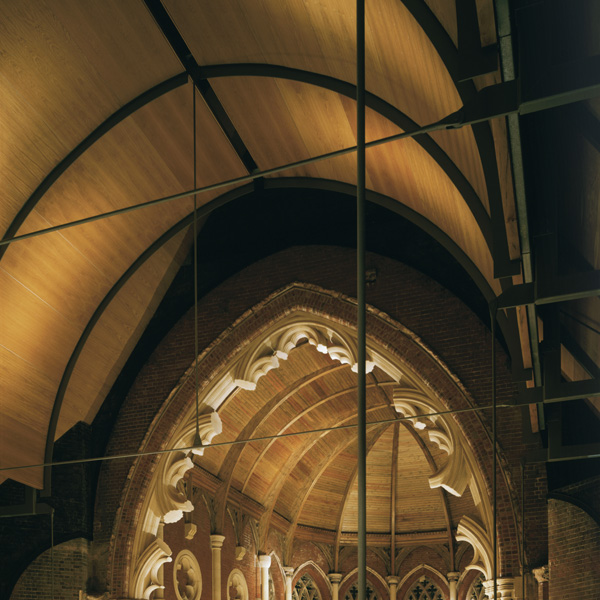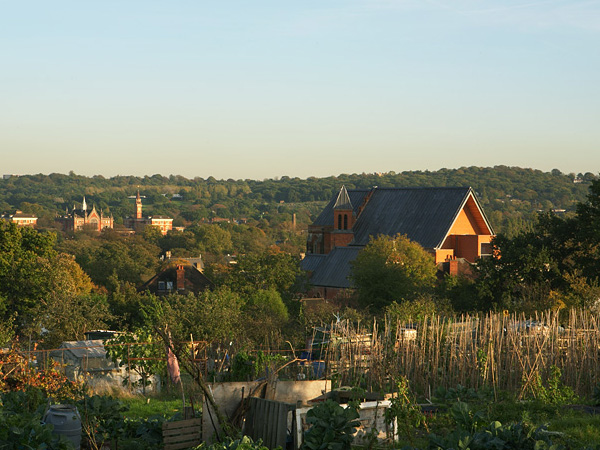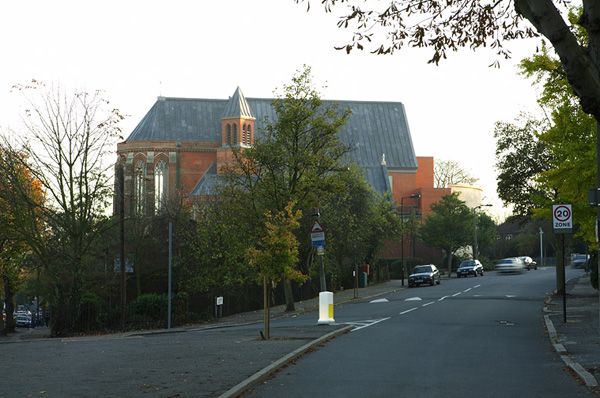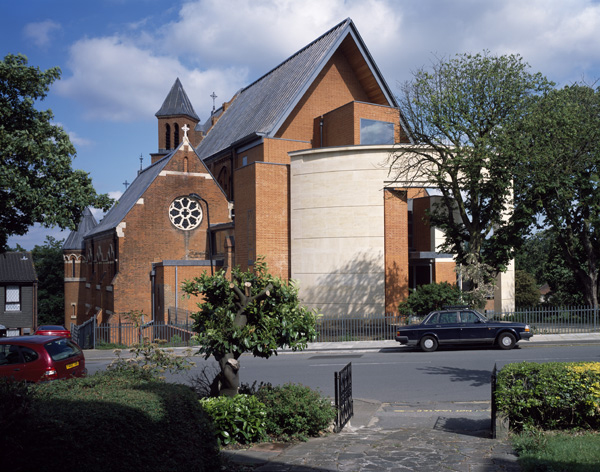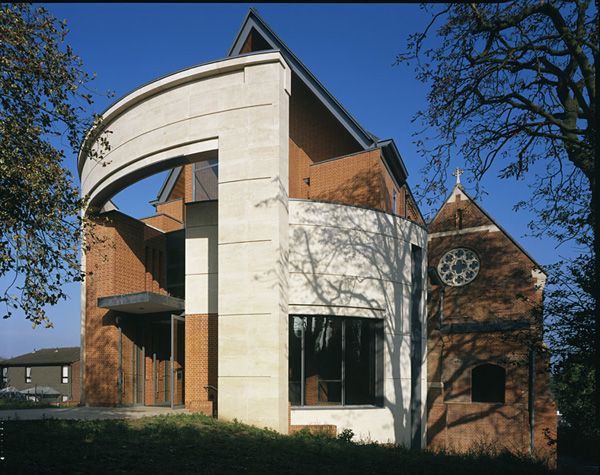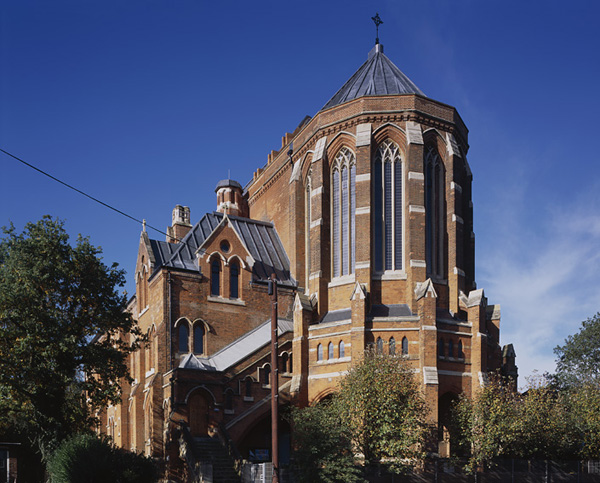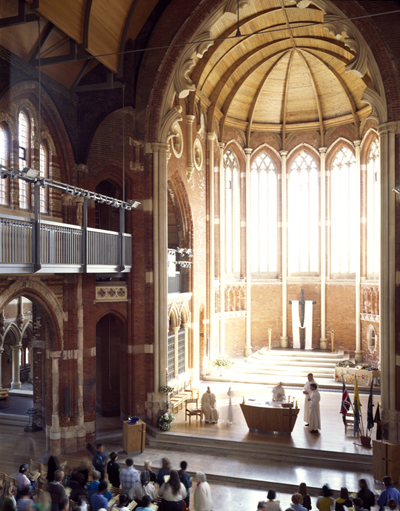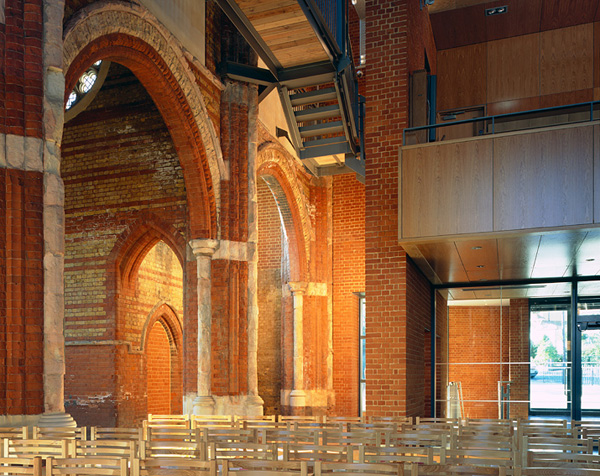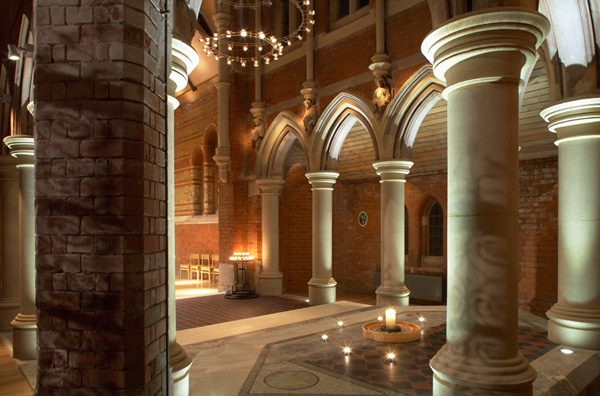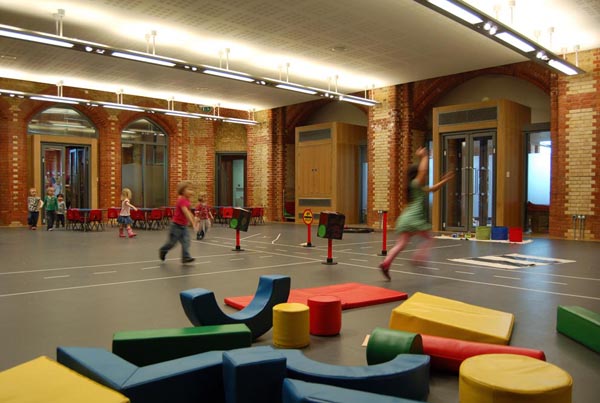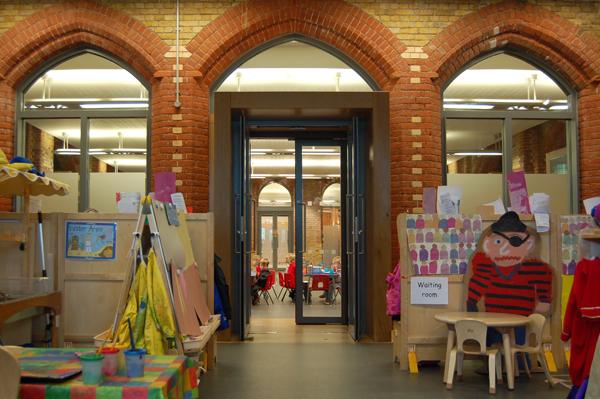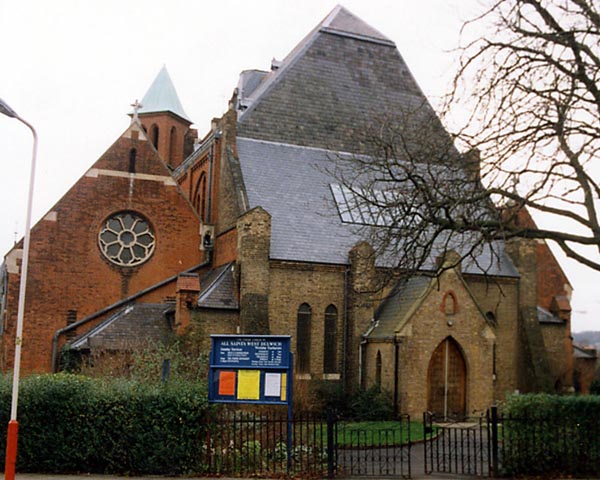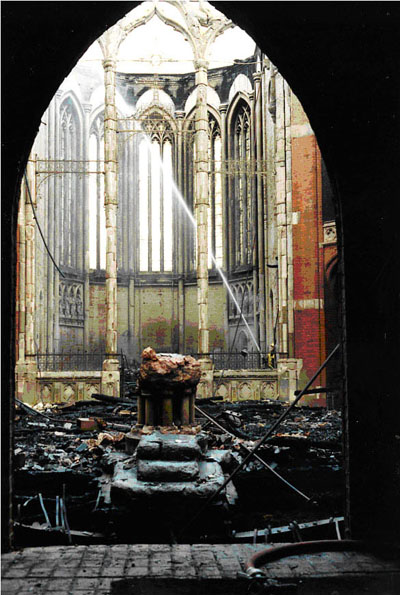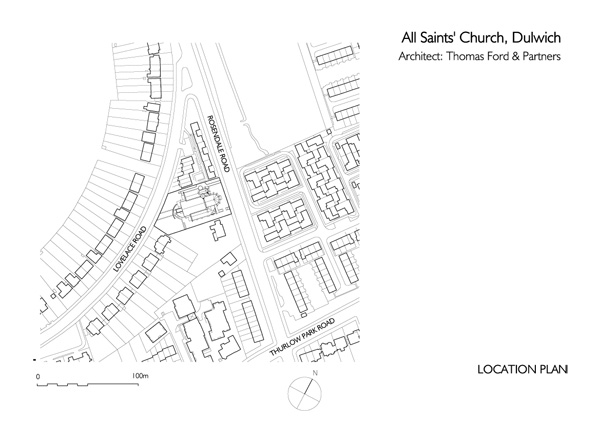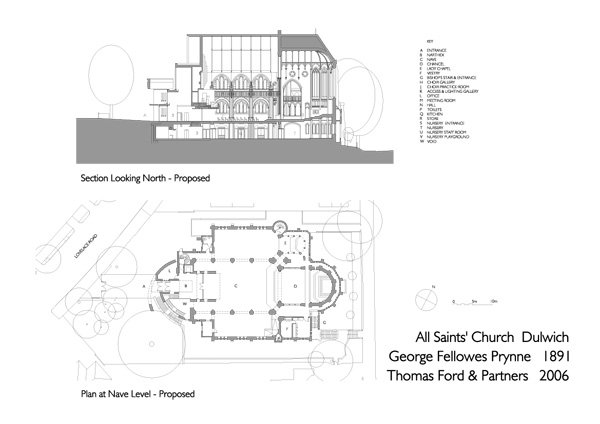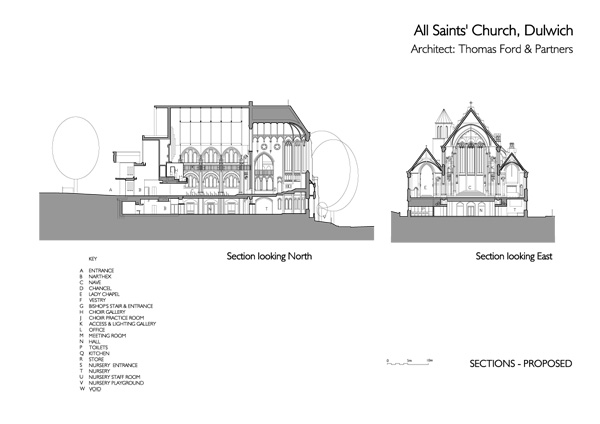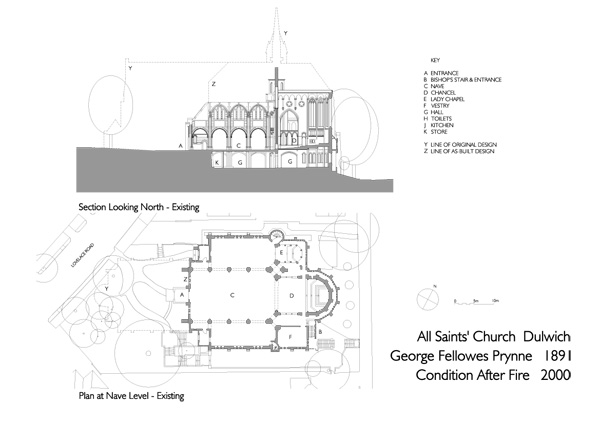All Saints' Church, Dulwich
Extension & reconstruction following fire
Contract value: £6.85M
Located between Brixton and Dulwich on an east-facing slope previously occupied by market gardens, All Saints' Church was constructed in 1891, before the arrival of the suburban houses that now surround it. The grade I listed church is considered one of George Fellowes Prynne's most accomplished designs. Only three of the seven bays originally proposed for the nave were completed and for over a century the entrance to the church was via a 'temporary' lean-to construction at the west end. We had been appointed to extend and 'complete' the west end when fire gutted the church in June 2000.
The new design provides improved spatial links between the previously disconnected worship spaces and community facilities in the crypt, a new choir gallery and practice room, together with offices, meeting rooms, toilets, a kitchen and café, access for disabled people and new sound and lighting systems. A series of large halls in the crypt, separated by sound insulated glazed screens, are shared between the parish and a children's nursery.
The remodelling of the church has been executed in a contemporary architectural language that makes use of materials matching the original construction: red facing brick and Bath stone. New construction interlocks with the surviving original fabric of the church to create a unified series of overlapping spaces. Local soot staining and retained fire-damaged masonry record the building's history.
Photography of completed project :
Paul Riddle
